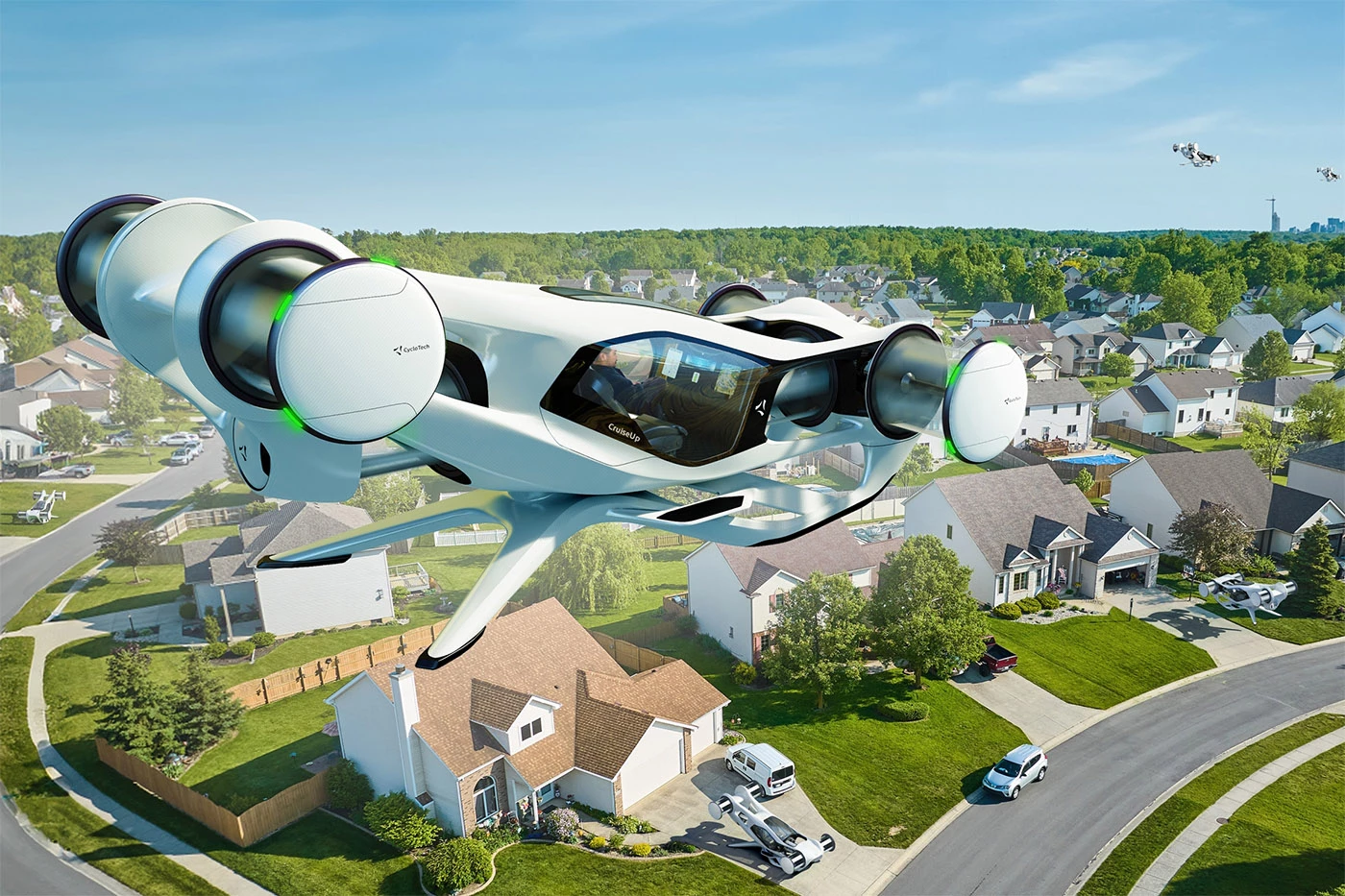Austrian aviation company CycloTech has revealed it's building a demonstrator version of an eVTOL to showcase its propulsion system for electric flight. The firm is hoping to take the wraps off its BlackBird flying car by the end of this year, and commence test flights in early 2025.
CycloTech has been shaping its 360-degree thrust vectoring propulsion barrels, which it calls CycloRotors, over the last few years. It's keen to test the seventh generation of this propulsion system in this demonstrator. The company also says this is especially well suited to flying cars, because it's the only one that can control the thrust vector in strength and direction in a full 360-degree path.
The BlackBird will feature six CycloRotors to enable vertical take-off and landing, parallel parking, and braking and deceleration in mid-air. The schematic diagram for this vehicle below shows a similar design to the company's CruiseUp concept from 2023, but it'll end up being about three quarters of its size – at 16 ft (4.9 m) long, 7.5 ft (2.3 m) wide, and 6.5 ft (2 m) tall. With a maximum take-off weight of 750 lb (340 kg), it'll manage a top speed of 75 mph (120 km/h).
The six CycloRotor configuration includes two rotors along the length of the vehicle; that enables precise sideways and backward flight, as well as mid-air braking – all without tilting or banking. That should give passengers a smooth ride regardless of the conditions in the air. Having six rotors also means you've got some redundancy in case any of them fails.
Although the BlackBird isn't yet ready for the camera, CycloTech is raring to go with its upcoming demonstrator. It's already racked up 800 test flights since 2021 with its first-generation flight demonstrator, which features four CycloRotors and a smaller 183-lb (83-kg) body. The company also raised US$21.8 million (€20 million) in February, and hopes to take to the skies with the BlackBird early next year.
CycloTech hasn't specified how much room the BlackBird will have on the inside, or what sort of range its battery will support. If it follows the CruiseUp concept's figures, we're looking at seating for two and a relatively short range of 62 miles (100 km). And in that case, it'll likely be closer to a personal vehicle rather than an air taxi.
With that, CycloTech will be up against other moonshot companies aiming to make flying cars a reality in the next few years. In the world of air taxi development, Joby Aviation just landed a $500 million round of funding from Toyota last month, and completed an exhibition flight in Japan this week. If these projects take off, the future of aviation could look a lot like what was promised all those years ago in The Jetsons.
Source: CycloTech











